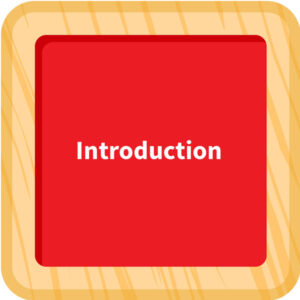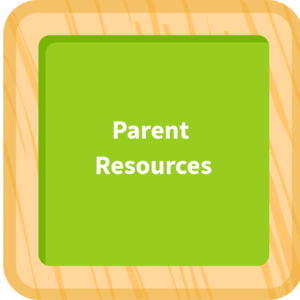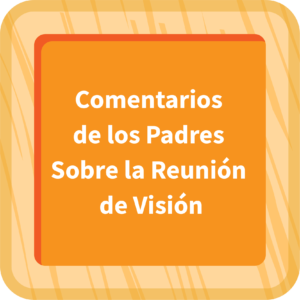
The National Center for Children’s Vision and Eye Health at Prevent Blindness partnered with the National Head Start Association to create an online resource – Small Steps for Big Vision: An Eye Health Information Tool Kit for Parents and Caregivers – to provide parents and caregivers with the information, suggested actions, and assistance they need to be empowered partners in their children’s vision and eye health, and to care for their own vision and eye health.
The tool kit was designed for use by Head Start and Early Head Start programs, as well as any early childhood education and care program.
Small Steps for Big Vision is supported by the Health Resources and Services Administration (HRSA) of the U.S. Department of Health and Human Services (HHS) as part of an award totaling $300,000 with 5% financed with non-governmental sources. The contents are those of the author(s) and do not necessarily represent the official views of, nor an endorsement, by HRSA, HHS, or the U.S. Government. For more information, please visit HRSA.gov.
Parents Need to Know…
A quick guide to parent education resources you won’t want to miss


Introduction to Small Steps for Big Vision
The information in this tool kit is designed to help reduce the gap between vision screening referrals for eye examinations and follow-up to eye care. It is our hope that Early Head Start, Head Start, child care, early care and education programs, and parent education and advocacy organizations will use this tool kit to impact the vision of children and their families across the United States for years to come.
Resources to Download:
Recording of Small Steps for Big Vision Webinar, October 22, 2020
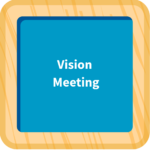

Learn how to lead a vision meeting for parents
Much of the vision screening referral follow-up literature talks about parent education as a way to help reduce the gap between a vision screening referral and a follow-up eye exam.
This section offers materials for you to hold a training session with your parents and caregivers to provide parent education.
Some of you call your training sessions with parents and caregivers “meetings” or “socials” or other names. Whatever the name you use, this section of Small Steps includes materials to hold a training session about common vision disorders in young children; the importance of vision screening; and the importance of arranging and attending an eye examination, following the eye doctor’s treatment plan, and participating in ongoing care.
The scripted PowerPoint also includes information about the importance of parents and caregivers in taking care of their own vision and eye health needs. Visit the section on Parent/Caregiver Comments About the Vision Meeting/Social to see comments and view a video from a parent who attended a vision meeting/social.
This section of Small Steps for Big Vision: An Eye Health Information Tool Kit for Parents and Caregivers includes the following:
- A training manual in both English and Spanish describing how to arrange and conduct a training session for parents and caregivers;
- Invitation templates to share with parents and caregivers;
- Sign-in sheets for your records;
- Handouts to distribute at the session in both English and Spanish, including an evaluation form that we hope you will scan and return to us to help us continually revise this tool kit to meet your needs and the needs of the families you serve;
- Experiential activities to use during the PowerPoint presentation to give parents and caregivers the sense of how their children may see with a vision disorder; and
- A scripted PowerPoint presentation, that includes embedded videos and pronunciations of vision disorders, such as amblyopia, strabismus, hyperopia, myopia, and anisometropia.
If you have questions, contact us at [email protected] with Small Steps and part of your question in the subject line.
Vision Meeting Topics


Presenter Guide


Invitation
Resource to Download


Handouts
Resources to Download

INSTRUCTIONS FOR SHOWING POWERPOINT AT VISION MEETING/SOCIAL
To download to your laptop or PC and use either the English, Spanish, or a combination of English and Spanish PowerPoint slides:
Vision Meeting Presentations (Click Here to Download from Google Docs)
-Right click on the PowerPoint version you want to use and select “Download”
-Click on “Open”
-Go to “Slide Show” view to begin animated PowerPoint slides.
(You can use the PDF PowerPoint version, which has slides and talking points, when presenting.)
Vision Meeting English Slides and Notes
Vision Meeting Spanish Slides and Notes
Vision Meeting Combined Spanish and English Presentations with Notes


Learn about good vision for your child
Up to 1 in 17 young children, 1 in 5 Head Start children, and an estimated 1 in 4 or 5 school-aged children have a vision disorder that can lead to permanent vision disorders if not found and treated early.
Too often children do not receive an eye examination after a vision screening referral because parents and caregivers do not know their children have a vision disorder. And, many parents and caregivers do not know about the importance of good vision for their children’s development and learning.
We created this online tool kit the National Head Start Association to give you lots of information about the importance of taking care of your child’s vision . . . and for taking care of your own vision.
It is our hope that if you have more information about vision, and the importance of good vision, you will help make sure your child receives an eye examination by an eye care doctor, treatment, such as prescription glasses, and ongoing care.
Small Steps for Big Vision includes many resources about vision screening, what will happen at the eye examination, where to find eye doctors, and how to pay for the eye exam and glasses, if needed. Resources also include frequently asked questions about vision and eye health.
This section of Small Steps for Big Vision also includes resources for health managers, school nurses, and others to run a special meeting or social that includes a short PowerPoint presentation and fun games.


Signs & Symptoms of Vision Problems
This section of Small Steps for Big Vision gives you information about the signs and symptoms of vision problems.
You will see:
- A game-like poster of 18 vision development milestones from birth to the 1st birthday;
- A guide to vision health for your newborn, infant, and toddler;
- Common early childhood vision disorders, including links to videos, webcasts, and a handout;
- A handout of 8 questions from parents about myopia (nearsightedness);
- Tips for moving from vision screening to the eye examination by an eye doctor if your child does not pass vision screening;
- A document with signs of possible vision problems in children;
- A glossary listing common vision and eye words and definitions;
- A checklist you can complete about signs and possible vision problems in children, with information about making an appointment with an eye doctor for an eye examination, if needed; and
- Risk factors for vision problems in children.
Some classroom behaviors are related to poor vision. See the information about vision and classroom behaviors. Some research shows an association between poor vision and learning. See the information about vision and learning.
Resources
Additional Resources (Spanish)
18 Hitos del Desarrollo Ocular Desde el Nacimiento Hasta el Primer Cumpleaños del Bebé
Signos de problemas de visión posibles en niños
Dele a su hijo la mejor visión posible
Factores de riesgo para problemas de vision
Respuestas a 8 Preguntas de los Padres Sobre la Miopía
Un glosario de términos relacionados con los ojos y la vista


Vision Screenings, Eye Examinations, and Treatment
When your child does not pass vision screening in the Head Start or school classroom, or in other community settings, you will receive a referral for an eye examination from an eye doctor. This page gives you information about the importance of following up with an eye doctor when your child does not pass vision screening.
To understand the steps along the pathway between vision screening and the eye exam, look at “10 Small Steps From Vision Screening to the Eye Exam and Possible Treatment for Big Vision . . . The Best Vision Possible for Your Child.”
You will see information about:
- The difference between vision screening and an eye examination;
- The importance of vision screening;
- How vision screening is key to your child’s healthy development;
- The importance of an eye examination when your child does not pass vision screening;
- How to find an eye doctor in or near where you live;
- The Affordable Care Act and Your Child’s Eyes;
- How to find assistance with paying for the eye examination, and prescription eyeglasses if necessary; and
- What happens at a pediatric eye examination.
Some classroom behaviors are related to poor vision. See the information about vision and classroom behaviors.
Some research shows an association between poor vision and learning. See the information about vision and learning.
This page also includes information about helping your child wear new prescription eyeglasses.
You will also see a link to a table of vision screening tools vision screeners in your Head Start program, your school, or other community setting should use to screen your child’s vision. If you want to advocate for appropriate vision screening for your child and other children in your child’s classroom or community setting, show the table to the folks in that program who screen vision or the folks in chart of those classrooms and community settings.


Importance of Vision Screening
The Difference Between Vision Screening and an Eye Examination
The Importance of Vision Screening
Association Between Vision and Learning
Vision and Classroom Behaviors
Additional Resources
10 Steps from Vision Screening to Eye Exam
Vision Screening is Key to Healthy Development
Diferencia entre una evaluación de la vista y un examen ocular
La importancia de la evaluación de la vista
Asociación entre visión y aprendizaje
Los comportamientos en el aula pueden estar relacionados con la mala visión
Additional Resources
Diez pasos pequeños desde la evaluación de la vista hasta el examen ocular
¡La Evaluación de la vista es clave para un desarrollo saludable!


The Importance of Arranging and Attending Eye Examination After Vision Screening Referral
Difference Between Vision Screening and an Eye Examination
Importance of Eye Examination after Vision Screening Referral
What Happens at an Eye Examination?
Association Between Vision and Learning
Vision and Classroom Behaviors
Additional Resources
10 Steps from Vision Screening to Eye Exam
Diferencia entre una evaluación de la vista y un examen ocular
¿Qué pasará en el examen ocular pediátrico?
Asociación entre visión y aprendizaje
Los comportamientos en el aula pueden estar relacionados con la mala visión
Additional Resources
Diez pasos pequeños desde la evaluación de la vista hasta el examen ocular
La Ley de Asistencia Asequible y los ojos de su hijo


Glasses for Your Child
When you receive a referral from a vision screening and you take your child for an eye examination, your child may receive new prescription eyeglasses as part of the eye doctor’s treatment plan.
Or, your child may already wear prescription glasses.
This section of Small Steps for Big Vision includes information about:
- The importance of wearing prescription eyeglasses
- How to handle new prescription eyeglasses
- Questions to ask your child about the new eyeglasses
- Tips for adjusting to the new eyeglasses
- Tips for taking care of the new eyeglasses
- FAQs about the new eyeglasses, including links to assistance with getting the glasses
- A story book about eyeglasses
- 15 books about children wearing eyeglasses
Resources to Download

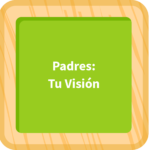
Taking Care of Your Own Vision and Eye Health (pdf)
Padres, tutores, cuidadores: Cuidarse su propia visión (pdf)

Find links to many topics on this page to help you care for your own vision and eye health.
Topics
- Finding an eye doctor for your child and yourself – Your Child’s Sight – Taking Your Child to the Eye Doctor – at Prevent Blindness – Use the Optometrist or Ophthalmologist links
- For information from pregnancy and your vision, safe use of eye cosmetics, smoking and your vision, to ensuring your eye health, to adult eye diseases and conditions, and vision care financial assistance, visit the Fact Sheet resource page of Prevent Blindness
- Links to common vision and eye health terms, sort of like a dictionary of vision words.
- Prevent Blindness Glossary – https://preventblindness.org/glossary/
- Eye Terms & Conditions from the American Association for Pediatric Ophthalmology and Strabismus – https://aapos.org/patients/eye-terms
- You may also find this link to Common Eye Myths about your sight fun and interesting.
Resources to Download


Videos and Webcasts
Here you will find videos and webcasts about early childhood vision conditions, how the eyes work, and what to expect at a pediatric eye exam.
Development milestones for babies up to 1 year of age: https://youtu.be/9b-OQg0M-7U
For more information on the eyes and how we see, visit “The Eye & How We See” at Prevent Blindness. https://preventblindness.org/eye-how-we-see/ A video from the National Eye Institute, called “The Visual System: How Your Eyes Work” is available at: https://youtu.be/i3_n3Ibfn1c
Early Childhood Vision Conditions:
Amblyopia:
- What is Amblyopia? – American Academy of Ophthalmology – https://www.youtube.com/watch?v=fI9P7NU98EE&feature=youtu.be
- Amblyopia, Causes, Signs and Symptoms, Diagnosis and Treatment – Medical Centric – https://www.youtube.com/watch?v=eLbmk1Go8YQ&feature=youtu.be
- Amblyopia – American Association for Pediatric Ophthalmology and Strabismus – https://www.youtube.com/watch?v=_wMs-W515XA&feature=youtu.be
Strabismus:
- Strabismus – American Association for Pediatric Ophthalmology and Strabismus – https://www.youtube.com/watch?v=993C_P00_y4&feature=youtu.be
- What is Strabismus? – American Academy of Ophthalmology – https://www.youtube.com/watch?v=CAiawXTk3Zo&feature=youtu.be
How the Eyes Work:
- The Visual System: How Your Eyes Work – National Eye Institute – https://youtu.be/i3_n3Ibfn1c
- Learn About Eye Health – NEI for Kids – National Eye Institute – https://www.nei.nih.gov/learn-about-eye-health/nei-for-kids
What to Expect at a Pediatric Eye Examination:
- What will happen at an eye exam (AAPOS) – aapos.org/patients/resources/info-videos
- Your Child’s Eye Exam – Dr. Tracey Strombeck. Video from Prevent Blindness Wisconsin – https://www.youtube.com/watch?v=ebzOAI9mjug
Aquí encontrará videos y transmisiones por Internet sobre las afecciones de la vista en la primera infancia, cómo funcionan los ojos y qué esperar en un examen de la vista pediátrico.
Para obtener más información sobre los ojos y cómo vemos, visite “The Eye & How We See” a Prevent Blindness. https://preventblindness.org/eye-how-we-see/ Un video del National Eye Institute, llamado “The Visual System: How Your Eyes Work” esta disponible a: https://youtu.be/i3_n3Ibfn1c
Condiciones de la vista en la primera infancia:
Ambliopía:
- ¿Qué es la ambliopía? – American Academy of Ophthalmology – https://www.youtube.com/watch?v=fI9P7NU98EE&feature=youtu.be
- Ambliopía, causas, signos y síntomas, diagnóstico y tratamiento – Medical Centric – https://www.youtube.com/watch?v=eLbmk1Go8YQ&feature=youtu.be
- Ambliopía – American Association for Pediatric Ophthalmology and Strabismus – https://www.youtube.com/watch?v=_wMs-W515XA&feature=youtu.be
Estrabismo:
- Estrabismo – American Association for Pediatric Ophthalmology and Strabismus – https://www.youtube.com/watch?v=993C_P00_y4&feature=youtu.be
- ¿Qué es el estrabismo?– American Academy of Ophthalmology – https://www.youtube.com/watch?v=CAiawXTk3Zo&feature=youtu.be
Cómo funcionan los ojos:
- El sistema visual: cómo funcionan sus ojos – National Eye Institute – https://youtu.be/i3_n3Ibfn1c
- Aprenda sobre la salud ocular – NEI for Kids – National Eye Institute – https://www.nei.nih.gov/learn-about-eye-health/nei-for-kids
Qué esperar en un examen ocular pediátrico:
- Qué puede esperar en el oftalmólogo pediátrico. Video de the American Association for Pediatric Ophthalmology and Strabismus (AAPOS) – aapos.org/patients/resources/info-videos
- El examen ocular de su hijo – Dr. Tracey Strombeck. Video from Prevent Blindness Wisconsin – https://www.youtube.com/watch?v=ebzOAI9mjug


Parent Comments about Vision Meeting
Parents/guardians/caregivers attended vision meetings or vision socials provided by the 5 Head Start pilot sites to help create the Small Steps for Big Vision: An Eye Health Information Tool Kit for Parents and Caregivers. Their evaluations played a huge role in creating and revision this tool kit for parents, guardians, and caregivers across the United States and in other countries.
This section includes comments from a few of those parents.
Thank you for letting us know how you feel the materials in the tool kit are helpful for you.
Please complete this very short survey
Thank you Delta Gamma Foundation for sponsoring the distribution of printed copies of materials from the tool kit!
Published in October, 2020
If you are adapting information from the Small Steps for Big Vision tool kit, please use the following language and citation:
- Text: Adapted from “Small Steps for Big Vision: An Eye Health Information Tool Kit for Parents and Caregivers”.
- Citation: National Center for Children’s Vision and Eye Health at Prevent Blindness (2020). Small steps for big vision: An eye health information tool kit for parents and caregivers. https://nationalcenter.preventblindness.org/small-steps-for-big-vision/

